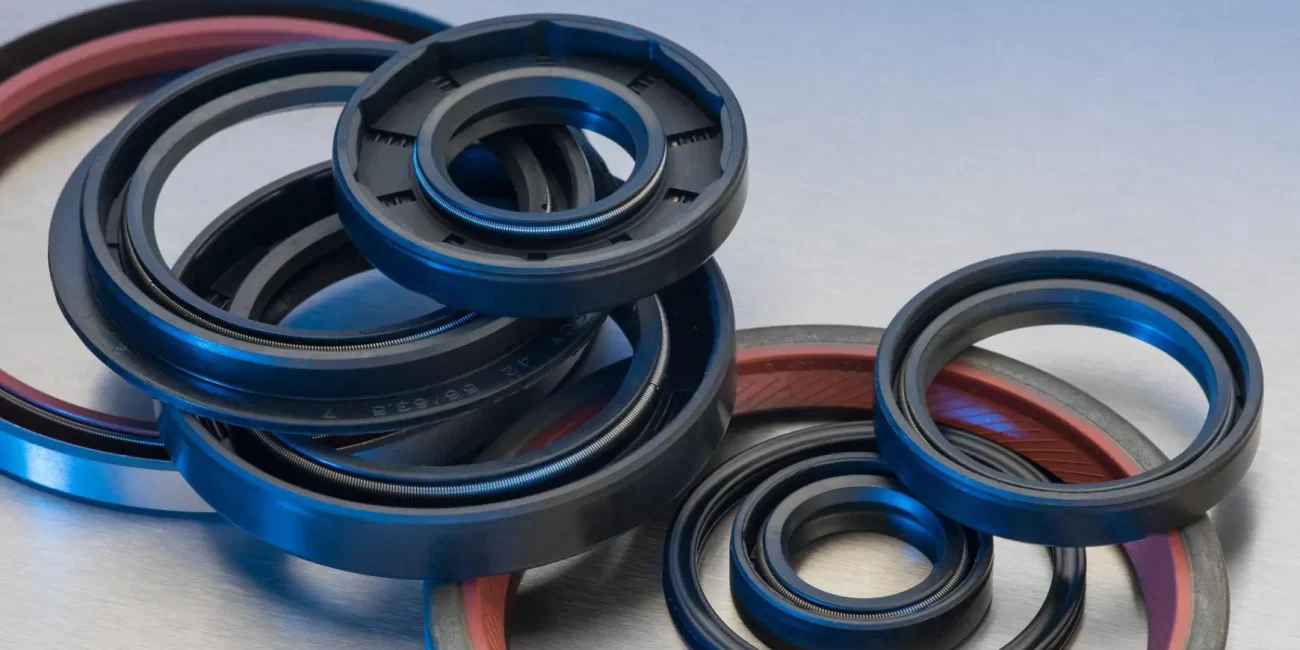How to Order the Right Oil Seal: A Comprehensive Guide

What Are Oil Seals and Their Importance in Machinery?
Oil seals, also known as grease seals or rotary shaft seals, are critical components in various machinery and mechanical systems. Designed to prevent the leakage of lubricants, such as oil or grease, these seals play a vital role in maintaining the efficiency and longevity of equipment.
Main Functions of Oil Seals
- Preventing Leaks: The primary function of oil seals is to keep lubricants contained within machinery. This helps maintain appropriate lubrication levels, reducing friction and wear on moving parts.
- Keeping Contaminants Out: Oil seals create a barrier against external contaminants, preventing dirt, dust, and moisture from entering the machinery. This protection is vital for maintaining the integrity of internal components.
Key Factors to Consider When Ordering Oil Seals:-
- Shaft Outer Diameter: Measure the diameter of the shaft where the oil seal will be installed. This measurement is critical to ensure a proper fit, as an incorrect size can lead to leaks and seal failure.
- Housing Inner Diameter: The housing diameter is the size of the bore or cavity where the oil seal will be installed. This measurement must be precise to avoid leaks and ensure the seal stays in place.
- Seal Dimensions: Determine the outer diameter (OD) and thickness (width) of the oil seal. These dimensions must match the housing to provide a secure and effective seal.
- Material Specification: Choose the appropriate material based on the operating environment, including temperature, pressure, and chemical exposure. Common materials include:
- Nitrile Rubber (NBR): Good for petroleum-based oils and general applications.
- Fluorocarbon (FKM): Resistant to high temperatures and aggressive chemicals.
- Silicone: Suitable for high-temperature applications but may not handle oils well.
- Polyurethane: Offers excellent abrasion resistance and is suitable for dynamic applications.
- Single Lip Oil Seal
Description: Features a single flexible lip that seals against the shaft.
Use: Ideal for low-pressure applications, such as in automotive engines and gearboxes.
- Double Lip Oil Seal
Description: Contains two sealing lips for enhanced protection against leakage and contaminants.
Use: Suitable for higher-pressure applications and environments with significant contamination, like hydraulic systems.
- Metal Case Oil Seal
Description: Features a metal casing that provides added strength and stability.
Use: Commonly found in heavy-duty applications, such as in automotive and industrial machinery.
- Custom Oil Seals
Description: Tailored seals designed for specific applications with unique profiles and materials.
Use: Found in specialized industries, including aerospace and pharmaceuticals, where standard seals may not suffice.
1. Round Profile Oil Seal
- Description: Circular cross-section, common type.
- Uses: Automotive engines, gearboxes, pumps. Versatile and effective for general sealing.
2. Square Profile Oil Seal
- Description: Square cross-section, larger sealing surface.
- Uses: Hydraulic systems, heavy-duty machinery. Enhanced resistance to pressure and wear.
3. V-Profile Oil Seal
- Description: V-shaped cross-section, flexible and adaptable.
- Uses: High shaft speeds, varying loads (pumps, compressors). Handles misalignment and shaft deflections.
4. TC-Profile Oil Seal
- Description: T-shaped cross-section with two lips and metal casing. Prevents oil leaks, protects against dirt and moisture.
- Uses: Heavy-duty equipment (construction, agricultural machinery).


